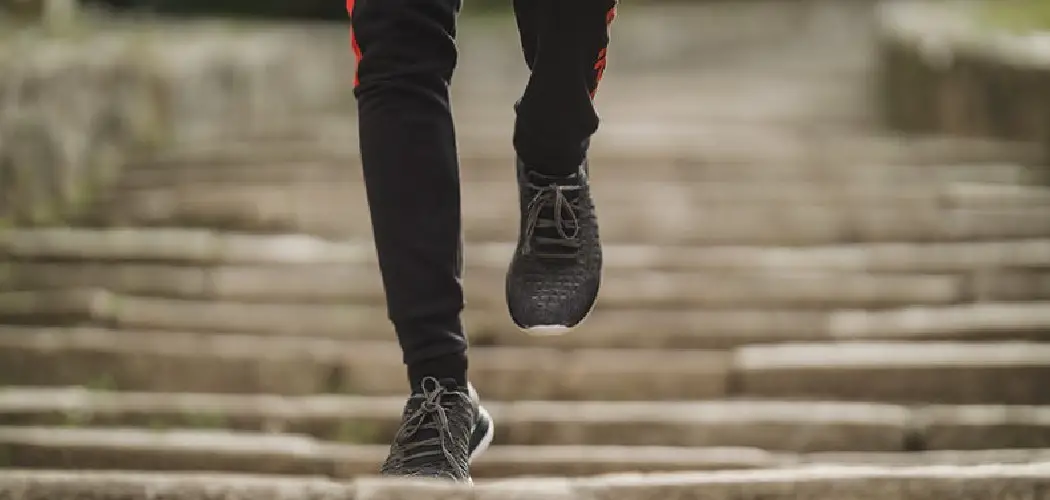If you’re like most people, you probably wear running shoes when you go for a walk. After all, they’re designed to be comfortable and supportive for walking, suitable? However, it turns out that wearing running shoes when you walk might not be the best idea. It could even lead to injuries. So, in this article we’ll discuss is it ok to wear running shoes for walking? Keep reading to learn more about why this is the case and what you can do instead.
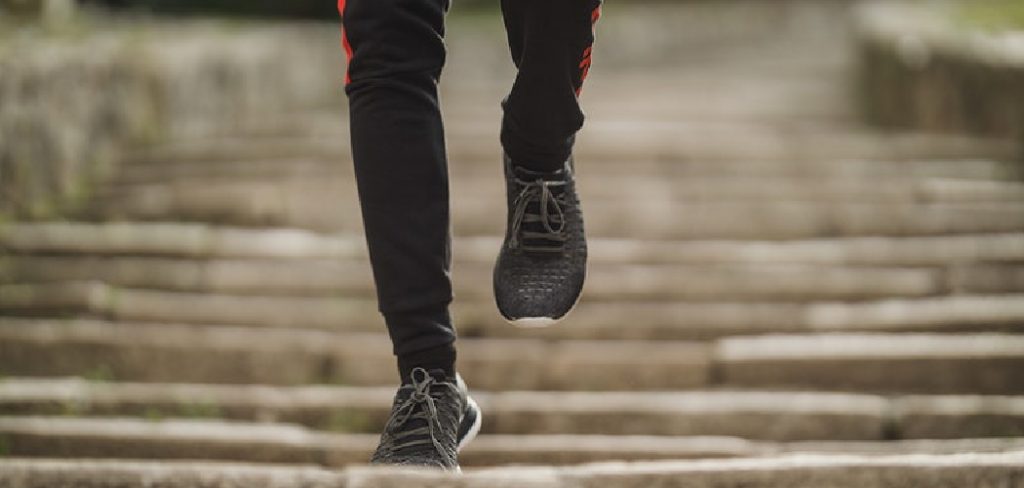
Running shoes are designed to cushion your feet and absorb the shock of impact when you run. This is great for running, but it’s not necessarily what you want when walking. When you walk, you want a shoe that will provide stability and support, which running shoes don’t always do. Wearing running shoes when you walk can lead to ankle sprains, Achilles tendonitis, and other injuries.
Summary: Yes, it’s perfectly fine to wear running shoes while walking. Running shoes are designed to provide better cushioning and support than regular walking shoes. They are also more lightweight and flexible, making them ideal for walking. The extra cushioning helps reduce the impact on your feet and joints when you walk for long distances or at a faster pace.
A Detailed Guide on Is It Ok to Wear Running Shoes for Walking?
Features Running Shoes
Materials:
Most running shoes are made of mesh and synthetic materials. The mesh helps to keep your feet cool, while the synthetic materials provide support and durability.
Size:
Running shoes are typically available in men’s and women’s sizes. There are also unisex sizes designed to fit both men and women. The size of your running shoe will depend on the width of your foot and the length of your toes.
When purchasing running shoes, always try them on in person. You should be able to wiggle your toes freely, and the shoe should be snug but not too tight. If you have a wide foot, finding a running shoe with a wide toe box is essential. Likewise, if you have a narrow foot, you will want to find a running shoe with a bit of toe box.
Shape:
The shape of your running shoe is also important. You will want to find a shoe with a curved sole, which will help support your foot and ankle. When looking for a running shoe, avoid shoes with a straight sole, as they can cause you to overpronate.
Pronation:
Pronation is the natural inward rolling of your foot as it hits the ground. Most people pronate to some degree, but some pronate more than others. If you pronate excessively, you may need to look for a running shoe that corrects this problem. There are shoes available that are designed to control excessive pronation.
Cushioning:
The amount of cushioning in a running shoe will vary from person to person. Some runners prefer a lot of cushioning, while others prefer a minimal amount. Therefore, it is essential to find a shoe that feels comfortable to you.
Flexibility:
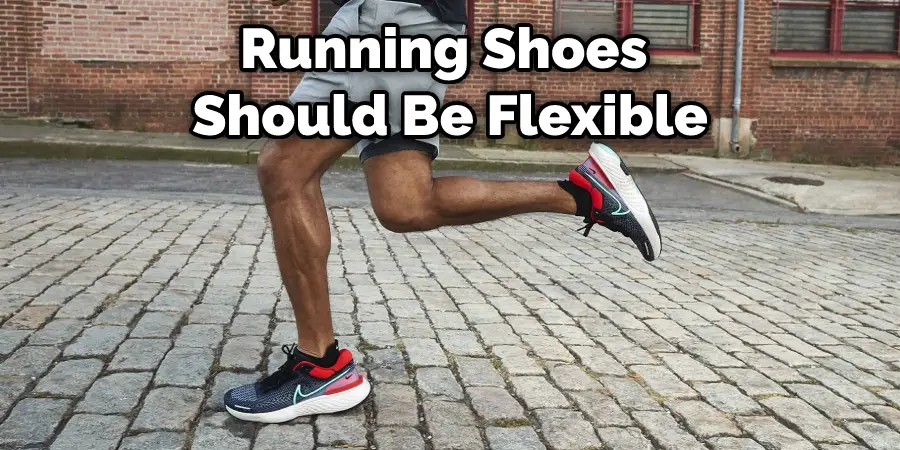
Running shoes should be flexible to allow your foot to move naturally. In addition, look for shoes that have a “breathable” upper, as this will help keep your feet cool and dry.
Durability:
Running shoes are typically designed to last for 500 miles. However, the mileage that they last will depend on how often you run and how well you take care of them.
Price:
Running shoes can range in price from $50 to $200. The higher-priced shoes tend to be more durable and offer more features, but they are not necessarily better than the lower-priced shoes. Therefore, it is essential to find a shoe that fits your budget and meets your needs.
You Can Check It Out to Can I Wear Hiking Shoes for Walking
Features of Walking Shoes
Materials:
Walking shoes are made to provide comfort and support when you’re out for a stroll. They usually have a leather or synthetic upper, EVA midsole, and rubber outsole. If you’re looking for a good pair of walking shoes, make sure they have the following features:
Size:
When buying walking shoes, try them on and get a good fit. The shoes should be snug but not too tight. You don’t want them to feel constricting or like they will slip off your feet.
Support:
Look for shoes that provide good arch support. This will help distribute your weight evenly as you walk, preventing pain in your feet and ankles.
Cushioning:
Walking can be hard on your feet, so it’s important to find shoes with good cushioning. This will absorb the impact of your steps and help keep your feet comfortable.
Breathability:
Since you’ll be wearing your walking shoes for extended periods, they must be breathable. This will help keep your feet cool and dry, preventing blisters and other problems.
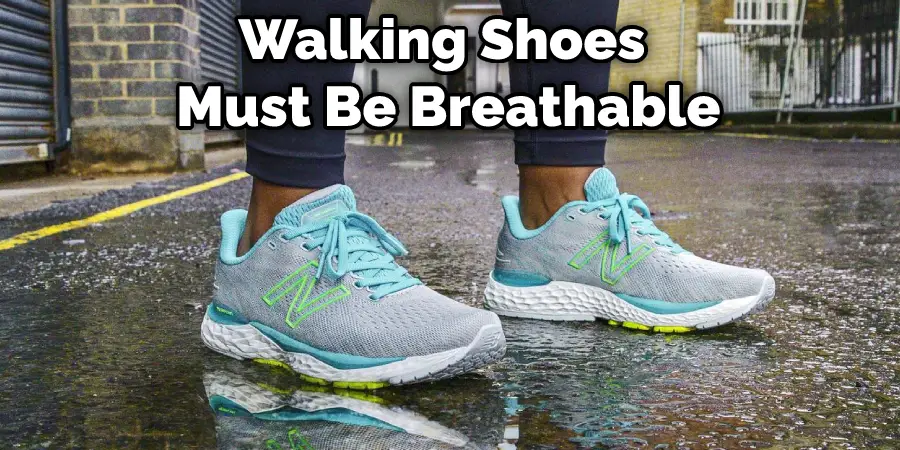
Shape:
The shape of your walking shoes is also essential. Look for shoes with a wide toe box, which will give your toes plenty of room to move. You should also make sure the shoes are comfortable to walk in and not rub or chafe your feet.
Flexibility:
Your walking shoes must be flexible to move with your feet. This will help you stay comfortable and avoid pain while you’re walking.
Durability:
You’ll be wearing your walking shoes a lot, so it’s essential to find a durable pair. Look for shoes made of high-quality materials and have a good sole. This will help them last longer and stand up to the wear and tear of walking.
Price:
Walking shoes can range in price from around $30 to $100. Therefore, it’s essential to find a pair that fits your budget and meets your needs. However, don’t sacrifice quality for the price. It’s better to spend a little more on a good pair of walking shoes than to end up with a cheap pair that doesn’t last.
You Can Check It Out to Can You Wear Turf Shoes on Grass
Types of Running and Walking Shoe
There are two types of running shoes: those for long-distance running and those for short-distance or sprinting. The construction of these shoes is different to provide support and cushioning for the different types of the impact associated with each activity.
Walking shoes are designed with a flatter sole to provide stability and support when bearing your full body weight on your feet. They also have a lower heel-to-toe drop, which means that the height difference between the heel and the toe is more minor than it is in running shoes. This helps to promote a more natural walking gait.
You Can Check It Out to Can Wrestling Shoes Be Used for Boxing
Running Vs. Walking Shoes
There’s a lot of debate over whether you should wear running shoes for walking. On one side, you have people who say that running shoes are too stiff and provide too much support, making them inadequate for everyday use. On the other hand, they argue that you’re better off wearing dedicated walking shoes, which have more cushioning and are designed to help you walk comfortably.
Others say that running shoes are just fine for walking and that the only difference between running and walking shoes is the amount of support they offer. They claim that if your running shoes are comfortable enough to run in, they’ll be just fine for walking.
So which is it? Is it ok to wear running shoes for walking?
The truth is, there’s no definitive answer. It depends on your individual needs and preferences. For example, some people find running shoes are perfectly comfortable for walking, while others prefer dedicated walking shoes. There’s no right or wrong answer, so it’s really up to you to decide what works best for you.
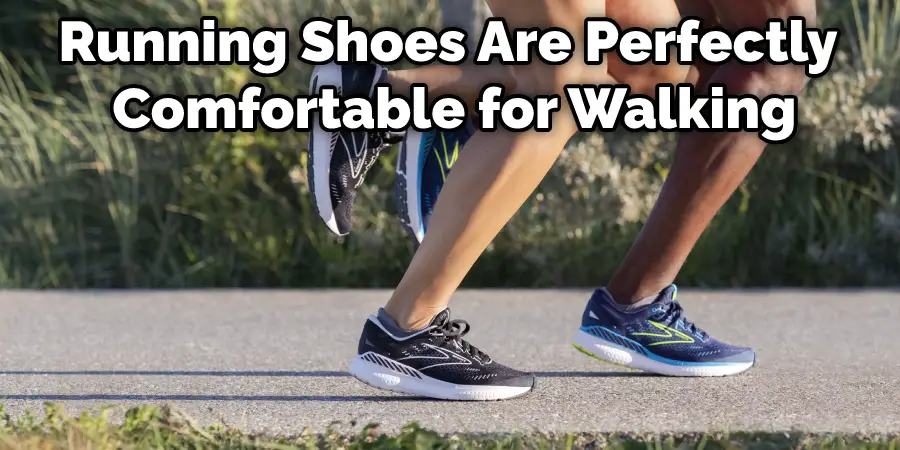
If you’re not sure whether to buy running or walking shoes, consider trying both types and seeing which one feels better when you walk. Ultimately, the most important thing is finding a comfortable and supportive shoe to help you walk without pain or discomfort. And if you can find a shoe that doubles as a running shoe, all the better!
Frequently Asked Questions
Are Walking or Running Shoes Better for Walking?
There are a few caveats to this statement. For example, if you have high arches or flat feet, you may need special footwear designed for these condition types. Additionally, some people benefit more from running in shoes than walking because the shock waves generated by their footfalls help improve muscle and joint function.
Either option will likely provide cardio exercise and improved general fitness levels. So, what’s important is finding something that feels comfortable and gets your heart pumping!
Can You Wear Running Shoes if You Don’t Run?
While running may not be the best exercise for everyone, it is still a great way to stay fit and healthy. If you don’t currently run, you can still reap some benefits by wearing running shoes while doing other activities like walking or biking. Running in these shoes will help increase your endurance and speed while supporting your feet and ankles.
Plus, according to study authors from Bucknell University’s Leisman School of Physical Education & Recreation, regular wear of supportive athletic footwear has been shown to reduce injuries in runners by as much as 60%. So if staying active is essential to you but injuring yourself isn’t an option, consider investing in a good pair of running shoes!
Can We Use Running Shoes for Daily Use?
There are certainly benefits to wearing running shoes daily, but there is also the potential for injury. When you wear running shoes all the time, your feet and ankles become accustomed to their stabilizing effect. As a result, when you take them off and try to transition into other types of footwear or walk average distances without them, it can be difficult to adjust – leading to injuries.
Instead of using running shoes every day, it may be better to alternate between wearing them and not wearing them. This way, your feet have some chance of adapting gradually and minimizing the risk of injury. And if necessary (for example, if you’re training for an event), make sure to use proper foot care while working in running sneakers, so they last as long as possible!
How Long Do Running Shoes Last for Walking?
Most running shoes will last for about 300 to 400 miles, but this number can vary depending on the type of shoe and how often it is used. Wearing runners made from lighter materials or with a more forgiving construction will usually give you longer-lasting results. Running shoes also tend to wear down faster in areas such as the toe area and around the midfoot region. So, if these sections show significant wear after extended use, it may be time to replace your shoes.
It’s essential to maintain proper foot care by regularly cleaning them using a mild soap and warm water solution, followed by drying them off completely. It would be best if you also shook out your Shoes every couple of months or when they start feeling likes they do not fit well anymore.
Conclusion
So, is it ok to wear running shoes for walking? The answer is yes! You can absolutely wear running shoes when you’re out for a leisurely stroll. They might even be more comfortable than traditional walking shoes. Just make sure that your running shoes are still in good condition and have plenty of treads left on them – you don’t want to slip and injure yourself.
You May Also Read: How to Lace Running Shoes for Flat Feet

